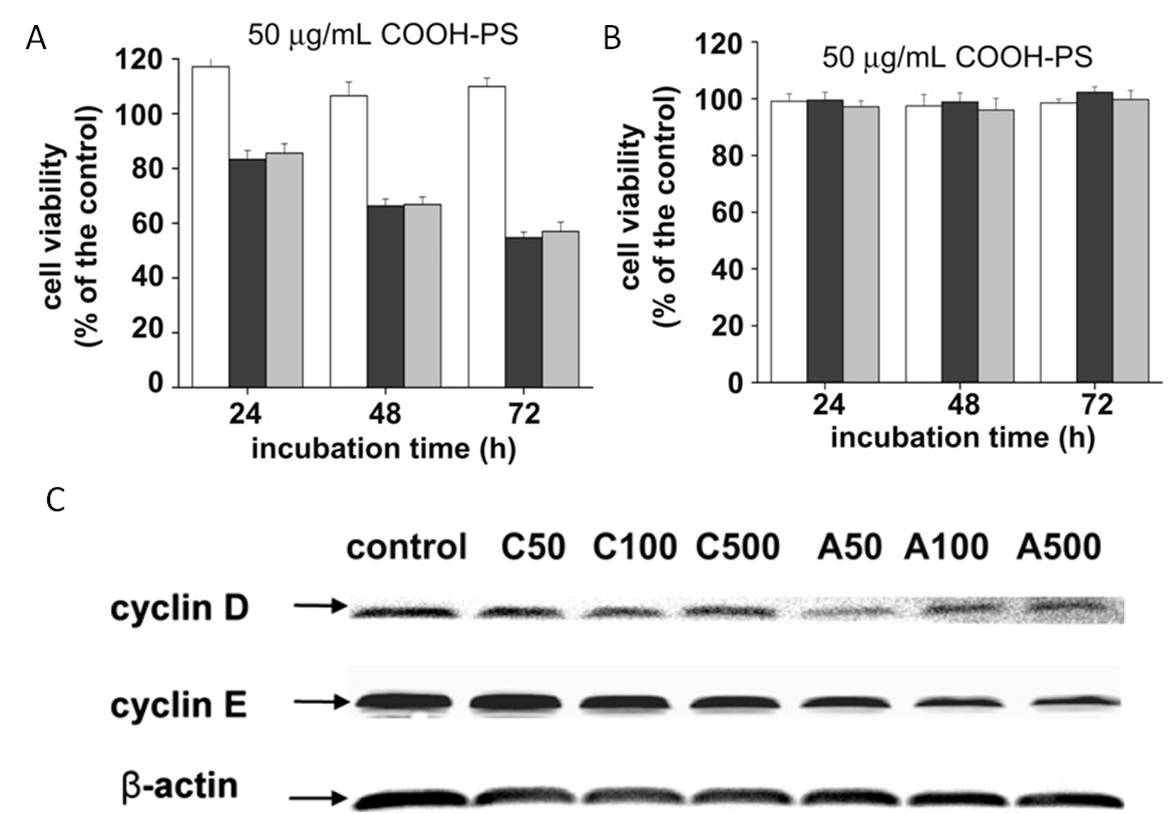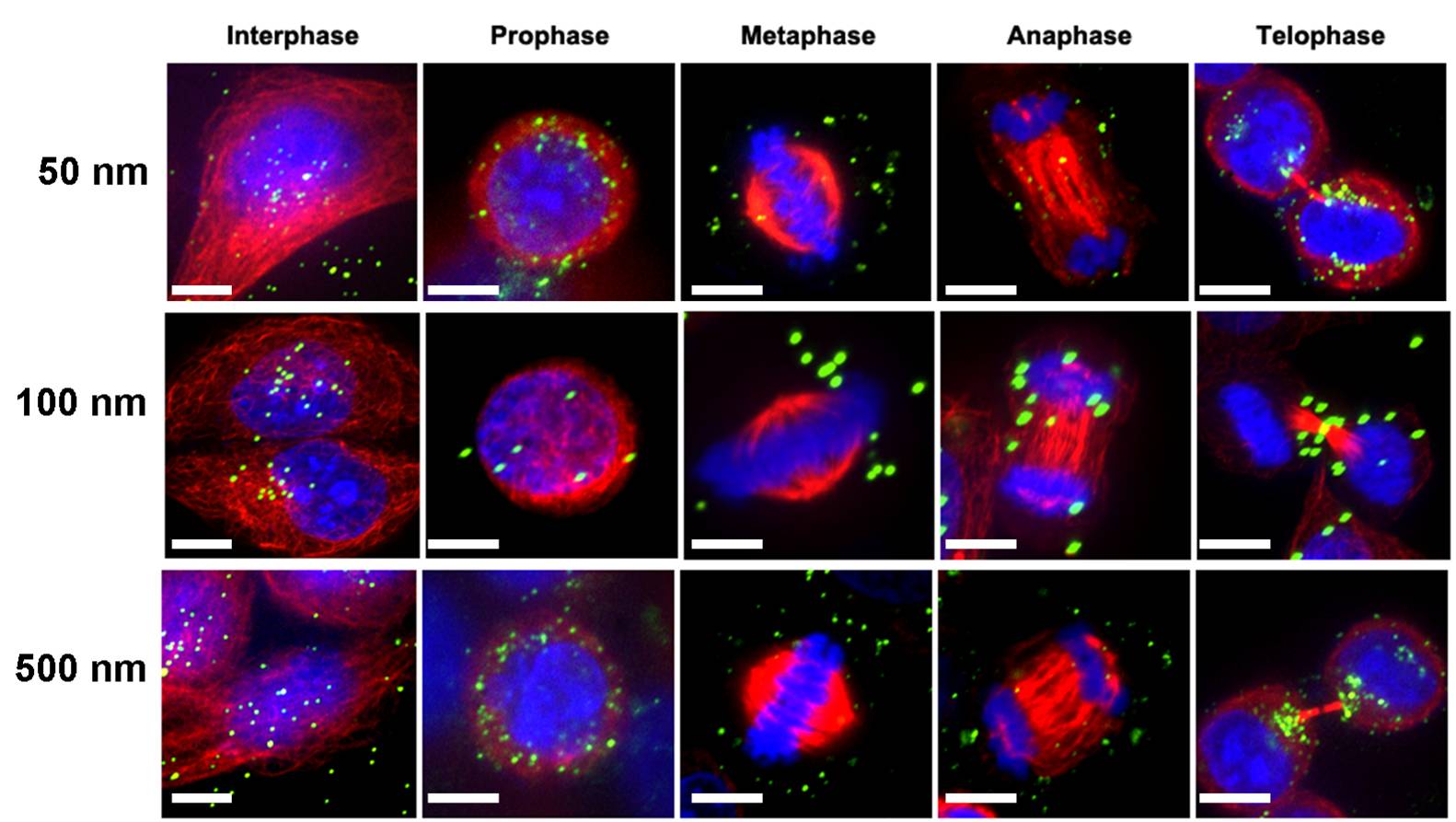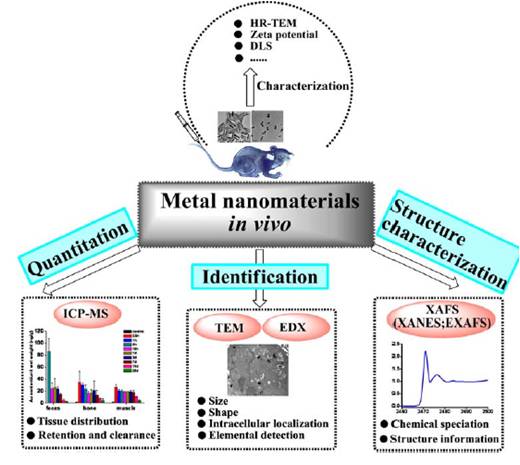1) Interactions between nanoparticles and biomolecules
The interactions between nanoparticle and biomolecule can adjust different signal pathways. Significant quantities of metal impurities could be mobilized from CNTs into surrounding fluids, depending on the properties and constituents of the biological microenvironment, as well as the properties of metal impurities. The metal residues had a dominant role in CNT-caused cytotoxicity, and the effect of CNTs on cell viability was limited. The selective binding of blood proteins on the SWCNT surface can affect the cellular responses and decrease cytotoxicity of SWCNT. (Acc Chem Res, 2013; Small, 2013; NPG Asia Materials, 2012; PNAS, 2011)

(Acc Chem Res, 2013)
2) The influence of nanoparticles on cell basic life activities
It is the first time for us to find that nanoparticle can change cell cycle without direct interacting with mitotic spindle or chromosomes. This finding will help to optimize the design and selection of much safer nanoparticles in vitro for medical applications. (Biomaterials, 2011)


(Biomaterials, 2011)
3) Rules and impact factors of the interactions between typical nanoparticles and organisms
After the animal exposed to typical nanoparticles by intratracheal or intranasal instillation, we focus on the potential influence of nanoparticles on the inhalation system, cardiovascular system and central nerve system. We integrate nuclear analytical techniques and other characterization techniques to study the absorption, distribution, metabolism and excretion of nanoparticles in organisms. (Toxicol Lett, 2008; Toxicol Lett, 2010; Anal Bioanal Chem, 2010; Toxicol Lett, 2011; Nanotoxicology, 2011, etc.)

(Anal Bioanal Chem, 2010)
1) Interactions between nanoparticles and biomolecules
The interactions between nanoparticle and biomolecule can adjust different signal pathways. Significant quantities of metal impurities could be mobilized from CNTs into surrounding fluids, depending on the properties and constituents of the biological microenvironment, as well as the properties of metal impurities. The metal residues had a dominant role in CNT-caused cytotoxicity, and the effect of CNTs on cell viability was limited. The selective binding of blood proteins on the SWCNT surface can affect the cellular responses and decrease cytotoxicity of SWCNT. (Acc Chem Res, 2013; Small, 2013; NPG Asia Materials, 2012; PNAS, 2011)

(Acc Chem Res, 2013)
2) The influence of nanoparticles on cell basic life activities
It is the first time for us to find that nanoparticle can change cell cycle without direct interacting with mitotic spindle or chromosomes. This finding will help to optimize the design and selection of much safer nanoparticles in vitro for medical applications. (Biomaterials, 2011)


(Biomaterials, 2011)
3) Rules and impact factors of the interactions between typical nanoparticles and organisms
After the animal exposed to typical nanoparticles by intratracheal or intranasal instillation, we focus on the potential influence of nanoparticles on the inhalation system, cardiovascular system and central nerve system. We integrate nuclear analytical techniques and other characterization techniques to study the absorption, distribution, metabolism and excretion of nanoparticles in organisms. (Toxicol Lett, 2008; Toxicol Lett, 2010; Anal Bioanal Chem, 2010; Toxicol Lett, 2011; Nanotoxicology, 2011, etc.)

(Anal Bioanal Chem, 2010)
 Close Page
Close Page- Text Size: A A A
 Printer Friendly
Printer Friendly
